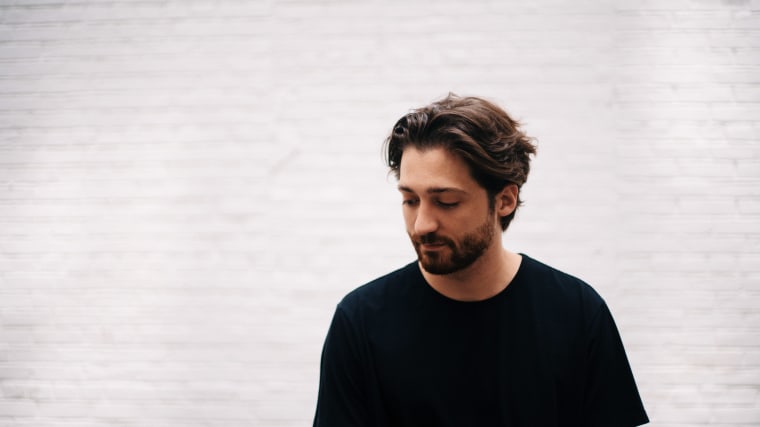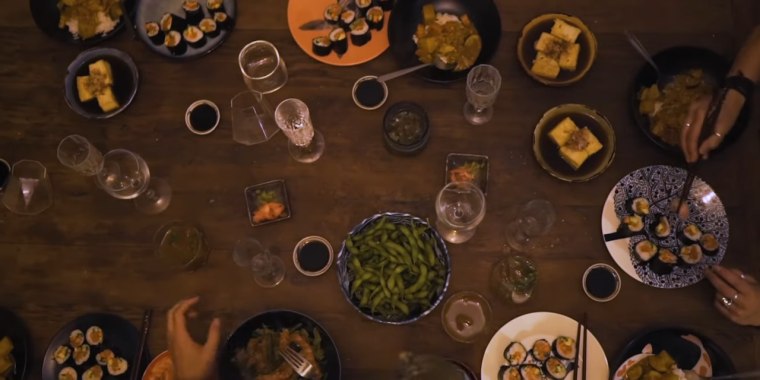The past 18 months have tested the limits of our capacity for positivity. Socially distant, unsure, and facing new and unfamiliar challenges, we streamed, celebrated, and connected virtually, learned, and, most importantly, created through unprecedented change. In the new short film, Life’s Good, produced by tech giant LG, this resilience is on full display. Broken down into six chapters from community to adventure, the film offers viewers a chance to see the world through the eyes of people from all across it. Sourced from over 500 public submissions from 33 countries, the global effort focused on both the mundane and the grandiose, and everything in between. In one moment, children play in an open field and a brave few go skydiving, hiking, and camping while surrounded by the beauty of nature. In another, a couple dances around their apartment and friends celebrate on a Brooklyn rooftop as fireworks abound. This mix of footage, from professional-grade clips to mobile phone snaps, blends almost seamlessly to tell a cohesive story of the human condition. “Goodness,” as explored in the film, is vast and complex, appearing totally different from one shot to the next depending on the perspective. Ultimately, the film is a glimpse into the multitude of ways existence, even in moments of complete solitude despite our new relationship with isolation, can be sweet.
The FADER sat down with the film’s director, New York-based Jackson Tisi, about the challenges of directing a film shot by the world, and what makes life so good.
 Jackson Tisi. 2021.
Jackson Tisi. 2021.
The FADER: You mention that the experience of directing Life Is Good was unlike your other directing experience because you had to relinquish so much control. Can you speak to that a bit more?
It was kind of a leap of faith. When this project first came in, that was the main hesitancy in joining. Signing on to the project was the idea of having to do something without the kind of railroad tracks that I'm used to. I do a lot of prep, a lot of writing, and a lot of planning. And then, with this project, there wasn't even a shoot. So, this was just a different sort of exercise in filmmaking, and once I reframed it, it became really exciting. When we asked people to submit, we didn't even know what type of material we would get. Then we were blessed with over 500 people submitting their footage to us, and we found our way as we went.
What drew you to the Life’s Good project despite being hesitant in the beginning?
Exactly the same thing: the idea of doing something new and different. As a young filmmaker, I always try to be really open to experimenting and learning new things. I saw this as a way for me to collaborate and connect with people from around the world and come away from the sometimes pretentiousness of filmmaking. There was something really human about this project that drew me to it. Once I opened my eyes to not being locked into doing things a certain way, that new opportunity seemed really enticing.
 Life's Good. 2021.
Life's Good. 2021.
How did you interpret that phrase and philosophy to create something bigger? What was the creative process like?
To call the film that, it felt very vague. It’s such a big concept. The way that I wanted to distill it was when I got all this footage back, how can I segment this out and turn it into facets of that phrase. I view each chapter as a side to what the bigger meaning of that might be. In a 20-minute film, I think you can only scratch the surface but we were able to find these consistent themes and threads.
The film brings such diverse viewpoints together from all around the world. How would you describe the points that you focused on when combining these stories into a single narrative?
One of my main goals across the entire project was finding a common sense of humanity and shared connection to really focus on the commonalities we share. That's how I broke down these chapters. No matter who you are, you feel lonely at some point. Everyone, no matter who you are, is constantly in motion or they have a sense of adventure. I wanted it to be something where if anyone watches it, they could not only see themselves in it but they could have seen themselves submitting to it. That was my goal and approach. It was amazing watching all this footage, from nature footage to van trips. It was so random and all over the place, and then finding these connective tissues was really cool.
Life’s Good is composed of six chapters. Which chapter holds the most meaning for you?
There are some things that are defined in a traditionally negative way that if reframed and looked at, are just way more complicated than being a negative or a positive kind of thing. So, the loneliness chapter for me was an example of that. I think after COVID and the year that we all had, obviously being alone is very hard. But, I think it's very human as well so finding a way be comfortable and happy with being alone with yourself is a journey that we all have to take. I thought that it was awesome to analyze something like loneliness and elevate a place of just being this human experience. The less we're afraid of it, the more we can embrace it.
 Life's Good. 2021.
Life's Good. 2021.
There are interesting production techniques and scenes showcased in the Life’s Good film. Could you tell us about any particular scenes or techniques?
There's a moment where it's almost just like matching shapes like someone tosses a basketball, and then you see the sun rising or setting. It's just these small edit moments. I don't know if any of it is, like, innovative or new but there are things I really love. With this project I just thought, let me take this footage and play around as much as I can. That freedom was awesome. We looked to one of my favorite shows, which is Adult Swim’s Off The Air. That show definitely played a role in our insight and influence with making this project. We sat it like getting a random set of Legos with no instructions, and you had to build something out of it. There are no instructions, they're not even color-coded to feel like they're the same set. But, we found a way for all this footage to feel like it belongs together.
What were the expectations you had for this project, and which points were you most looking forward to?
I loved working with my team. It was a really small group of us on this and I'm used to working with these really large production crews. We were able to get laser-focused, finding new things and working through it. That was the thing I looked most forward to. Returning to that every day. In terms of my expectations, the most freeing part was having no expectations. I put so much weight on expectations when I'm in pre-production. I'm usually already thinking about what's going to happen when it's out and everything. This was a breath of fresh air in terms of being someone that is kind of a control freak, and just letting go and trusting the process.
What do you have in mind for the future of the Life’s Good campaign? Are there any future steps in particular?
My focus was entirely on just this film. I think there are a million ways that this can go in the future. The thing that I found the most valuable and the most impactful was the sense of community and finding commonality between people. That was really rad because I think you could do a film like this every year with a different director and the same kind of approach. You could come up with entirely new lessons to be learned and new formats to be explored.
What would you tell a young director their most important resource is?
I could talk about this forever, but I think that the most important resource is probably just trusting themselves and trusting their gut. When I first got this project, I asked myself, is this something I want to do? It was hard to wrap my brain around because it was different. My gut told me to do it. Don't be afraid of any sense of failure just because it feels foreign to you. Trust your gut and jump into new things. The deep end isn't so scary.
 Life's Good. 2021.
Life's Good. 2021.
What small moment of your own would you have submitted to show how life’s good?
There are some moments that I actually did sneak into this film! I had a beautiful Fourth of July with some friends on a rooftop in Brooklyn, and all the fireworks are going off around us so I got some quick footage of that. I think for me, I wouldn't have thought too much about it. I would have just grabbed an emotion in a moment. There were two types of people who submitted and I appreciated both types. There were the people that sent in like, “oh this straight from me. I didn't put much thought into this,” and it's super organic and raw. And then there were people who wrote stuff, processed their feelings, and sent in short films. So, that moment felt right. We were already in the editing process at that point, and I was just like, “these are cool and they made me feel good.” Life was good, right then.
This interview was edited for length and clarity.